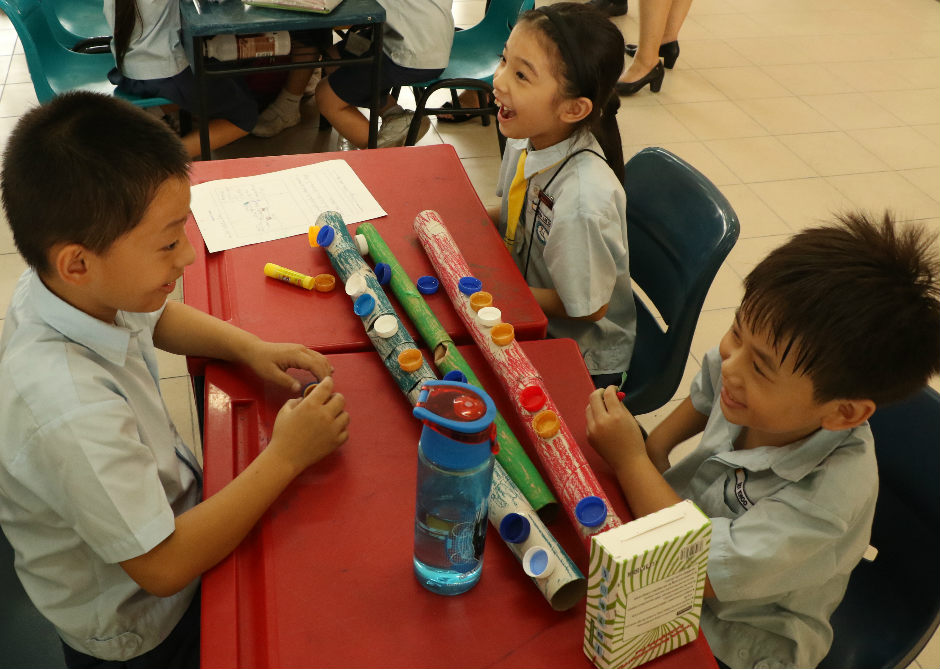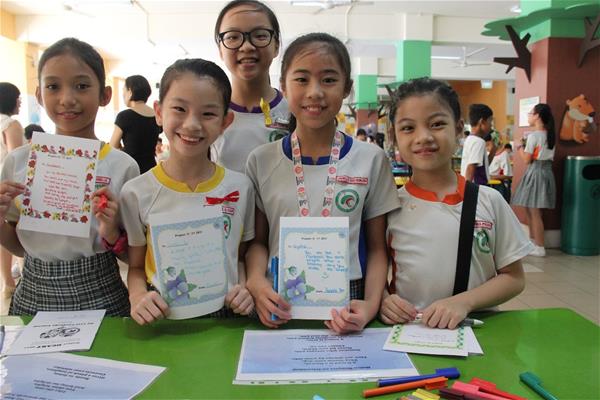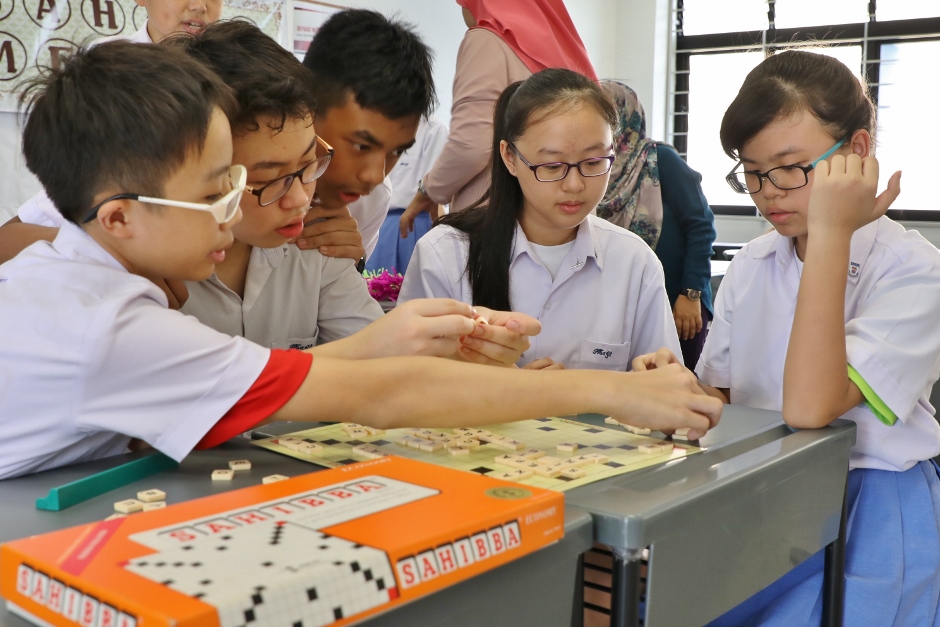Clutter in the classroom bothered 8-year-old Kelvin. He would see sharpeners and used pencils lying untidily on the desks, and observed instances when his classmates misplaced or forgot to bring their stationery, which would be an inconvenience throughout the day.
So when discussing the R’s – reduce, reuse and recycle – with his classmates, Kelvin shared his concerns and together, an idea for a “Stationery Stand” was conceived. Misplaced and unclaimed stationery could be deposited at this stand, for classmates to easily retrieve what belonged to them. Classmates could also borrow items, and the classroom would be a neater and more conducive place for learning.
“We planned this project in January, asked our group for recyclable materials, then started building the Stationery Stand in March,” shared Kelvin.
Such opportunities to innovate are a result of North Spring Primary School‘s Problem Identification and Solution Generations Values in Action (VIA) programme, which is integrated into the Project Work and Social Studies curriculum. Implemented school-wide, all students are taught to develop problem-solving skills progressively.
Presenting problems, not answers
Gone are the days when mere memorisation was sufficient for a student. To prepare for jobs of the future, students need to develop innovative minds, be ready to pick up new knowledge and skills, and not be afraid to ask silly questions.
To spark their curiosity, students were first told to observe the situations around them and identify problems. With students being increasingly savvy in technology, teachers also encouraged them to use internet search engines for data collection. After which, they were taught to streamline and organise the information using visual maps and diagrams.
But sometimes, one’s understanding of a problem is limited by personal experiences and environment. So to understand the problem better, students interviewed family members and school personnel, practically applying the communication skills taught in class.
After figuring out the problem, they brainstormed for innovative solutions. To guide younger students who felt stuck during idea generation, teachers sometimes joined in the conversation, or encouraged peer evaluation. Once ready, they presented their prototypes to their peers and teachers.
Being motivated to do good
“Social responsibility is very important. We want students to observe problems around them and do their part by actively solving them,” shared Ms Celeste Loh, HOD of Character and Citizenship Education at North Spring.
While Ms Loh encourages students to be innovative and creative, she reminds them to focus on improving the lives of people around them, and making it their driving force.
To encourage her classmates to share their titbits and create opportunities for making friends, Primary Two student, Chloe Kua, has been working on a “Snacks Rack” with her group. However, the process of building their prototype has not been easy.
“It is hard because we have to make many compartments for our sweets, biscuits and chocolates. But we never give up,” said Chloe.
At the end of the day, doing good for others has also resulted in good for the students.
“I see my students attempting to resolve disagreements amongst themselves instead of running to us teachers at the first instinct. They try to work things out and listen to each other’s suggestions,” enthused Ms Loh.






